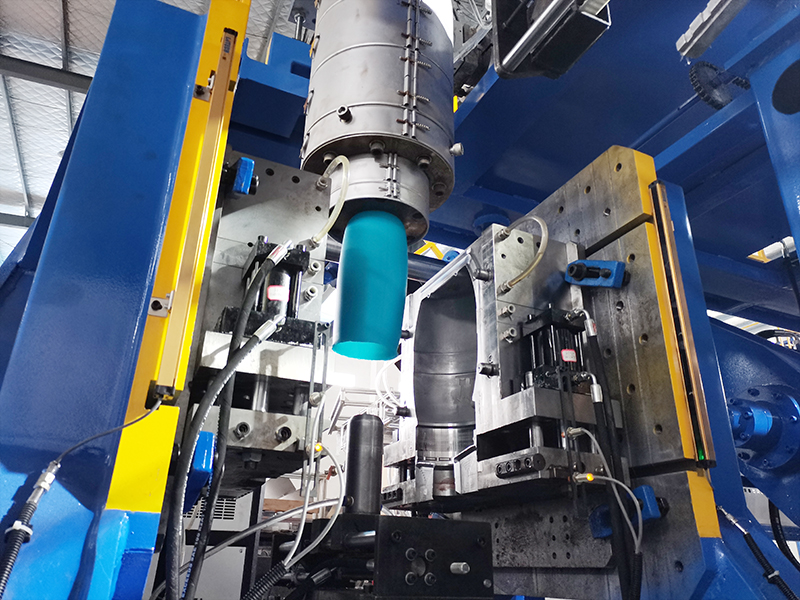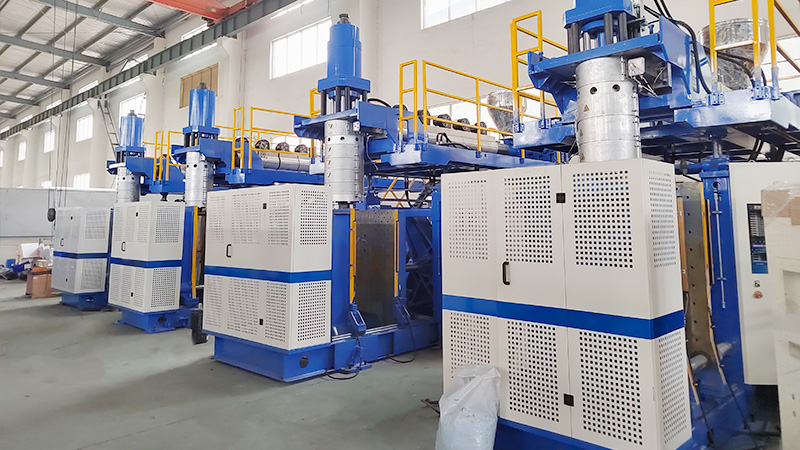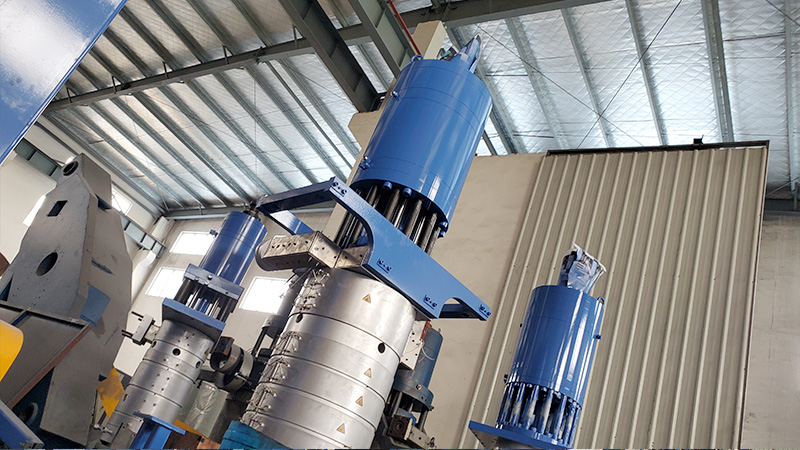
Blow molded material
Do you want to know what materials can be used for blow molding? Here is an introduction to the characteristics, advantages and disadvantages of several commonly used materials and their applications.
Choosing the right blow molding material for your machine is an important challenge. You have to take a lot of factors into consideration. For example: cost, hardness, plasticity, color, and whether the product you need meets the requirements. The following details may help you.
Don't worry! Let's start with a general idea of what blow molding is.

What is blow molding:
Blow molding, also known as hollow blow molding, is a rapidly developing plastic processing method. The tubular plastic billet obtained by extrusion or injection molding of thermoplastic resin is placed in the open mold while it is hot (or heated to the softening state). After the mold is closed, compressed air is passed into the billet immediately, so that the plastic billet is blown and close to the inner wall of the mold. After cooling and demoulding, various hollow products are obtained.
A material that can be used for blow molding
The most commonly used blow molding material is high-density polyethylene, which is used in most milk bottles and industrial containers. Other polyolefins are also often processed by blow molding. For example: PP, PET, PC, LDPE, PVC and so on.

HDPE:
High density polyethylene (HDPE) is the largest plastic in the world and one of the most commonly used materials in blow plastic products. It is widely used in a variety of products. In fact, bottles and containers consist of 53% HDPE products and 38% of total HDPE products. In the 1970s, heavy metal, glass and paper packaging began to be replaced by high-density polyethylene products. The plastic is used in a variety of products, including shampoo and oil containers, coolers, fuel tanks and industrial drums. It is commonly used, it is translucent, high plasticity, easy to stain, while also considered to be one of the safest plastics.
We currently uses high density polyethylene and high molecular weight polyethylene as raw materials to make various industrial containers. If you are producing blow molded products, we strongly recommend that you use high density polyethylene and high molecular weight polyethylene as raw materials. It is best not to use other grades of material. Otherwise, it will reduce the life of the product.
PP:
Polypropylene (PP) is a very popular molding resin. Its stiffness and lower density make it a good candidate for high temperature applications. Like high-density polyethylene, it is translucent and easily colored. But the hardness is slightly higher, the density is lower, the shape is friendly, has certain advantages. Polypropylene is commonly used in high-temperature applications such as dishwasher piping and medical components that require autoclaving.
PET:
Polyethylene terephthalate (PET) is a type of polyester that is usually injected and blow molded into clear containers. In fact, PET's biggest market is soft drinks and water bottles. Extrusion blow molding due to resin requiring a lot of drying is uncommon, but not unheard of.
PC:
Polycarbonate (PC) is a strong, transparent material, and the toughness of this transparent material makes it ideal for use in products ranging from eyeglasses to bulletproof glass in jet cockpits. In addition, it is commonly used to make 5 gallon water containers. This strong material casts well in basic shapes, but requires careful evaluation of complex shapes. It's also hard to grind.
LDPE:
Low density polyethylene is used in softer products that require high levels of stress cracking resistance or flexibility. It's also easy to shape, translucent, and easy to color. In general, the higher the vinyl ethyl acetate (EVA) content, the softer the molded product. Common applications include squeeze bottles, traffic channelization, and boat fenders. The most commonly used is blow molded plastic bag film.
Polyvinyl Chloride (PVC):
Although PVC is the third largest plastic in the world, its use of cadmium and lead as stabilizers, the release of hydrochloric acid (HCl) during processing and the release of residual vinyl chloride monomer after molding (most of these problems have been reduced) have come under intense scrutiny. PVC is translucent and comes in hard and soft forms, with soft resins commonly used as blow molding materials. Common applications include soft medical components, bellows, and traffic cones. Special treatment equipment is recommended to prevent corrosion by hydrochloric acid.
A material that can be used for blow molding
Thermoplastic Elastomers (TPE) :
Thermoplastic elastomers (TPES) are used to replace natural rubber in forming parts. The material is opaque and can be colored (usually black). TPES are commonly used in automotive suspension covers, intake pipes, bellows, and grip surfaces. It shapes well after drying and usually reworks well.
Acrylonitrile Butadiene Styrene (ABS) :
ABS is a relatively stiff plastic used in injection-molded football helmets. ABS is usually opaque as a blow molding material and is used in electronic casings and small appliances. ABS is well formed after drying, but its toughness makes grinding difficult. However, parts made from ABS are not as resistant to chemicals as polyethylene or polypropylene, so parts that come into contact with chemicals must be used with caution.
Polyphenylene Oxide (PPO) :
PPO is an opaque resin. It needs to be dried and has a limited ability to descend during molding. This restricts designers from using PPO parts with large blow ratios or flat shapes, such as panels and tables. Mold products high hardness, strength is relatively strong. Same as ABS.
Nylon/Polyamides (PA) :
Nylon melts quickly, so it is more commonly used in injection molding. The resins used for extrusion blow molding are usually variations of nylon 6, Nylon 4-6, nylon 6-6, and nylon 11. Nylon is an affordable translucent material that has good chemical resistance and performs well in high temperature environments. It is often used to make tubes and tanks in car engine compartments.
As you can see, there are a wide variety of blow molding materials. It may even dazzle you. The above is just a guide. Each material has its own advantages, disadvantages and characteristics. Although each material has its own advantages, but we still have to based on their own production needs. We need to choose different raw materials according to different product specifications.














